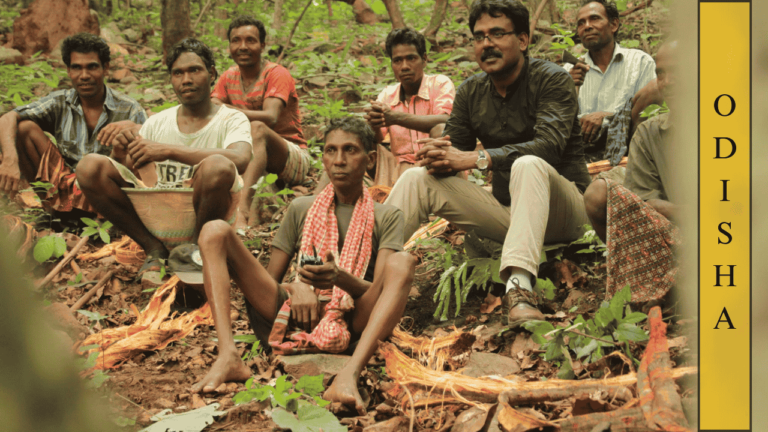
1. Introduction:
Intellectual Property Rights (IPR) refer to the legal protections granted to creators and innovators for their inventions, literary and artistic works, designs, and brand identifiers like trademarks. These rights provide creators with exclusive control over the use and commercialization of their products, fostering innovation and creativity. IPR is vital in global trade, as it influences the flow of goods and services across borders by ensuring that innovators can benefit financially from their efforts. Countries that provide strong IP protections attract more foreign investment and technology transfers, fostering economic growth.
1.1 Role of Agreements like TRIPS in Setting Global IP Standards:
The Trade-Related Aspects of Intellectual Property Rights (TRIPS) Agreement, under the World Trade Organization (WTO), is a cornerstone in harmonizing global IPR frameworks. Implemented in 1995, TRIPS ensures that all WTO member countries maintain a minimum level of IP protection across sectors, including patents, copyrights, trademarks, and geographical indications. It has introduced uniformity, facilitating trade among nations by reducing the risk of IP disputes. However, it also creates challenges, especially for developing countries, which face difficulties in balancing compliance with national interests like public health and economic development.
1.2 Purpose of the Research:
This research aims to examine how IPR shapes international trade by promoting innovation while also acting as a barrier for some nations. It will explore the opportunities created by IPR frameworks, such as technology transfer and market access, along with the challenges, such as limited access to essential goods and trade barriers for developing countries. The paper will provide insights into real-world trade disputes and offer recommendations for a balanced global IP regime that fosters both economic growth and public welfare.

2. Impact of IPR on International Trade:
2.1 Trade in Pharmaceuticals:
Intellectual property rights, particularly patents, play a significant role in the pharmaceutical industry by granting exclusive rights to companies for a fixed period, usually 20 years. This exclusivity incentivizes companies to invest heavily in research and development (R&D) for new drugs, ensuring innovation and scientific progress. However, it also has the downside of increasing drug prices, as companies seek to recoup their investments. This becomes a trade issue when patented drugs limit the availability of affordable medicines in developing countries, leading to public health concerns.
Compulsory licensing offers a way to address this challenge. Under the TRIPS Agreement, member countries can allow the production of a patented product without the consent of the patent holder in cases of public emergencies. India is a leading example of using compulsory licensing to manufacture and export affordable generic drugs. For instance, India issued a compulsory license in 2012 to produce a low-cost version of Bayer’s cancer drug, Nexavar, making it accessible to many patients. While this promotes access to life-saving medicines, it has led to trade tensions between developed countries, which prioritize IP protection, and developing countries, which focus on public health.
2.2 Technology and Innovation:
IPR plays a crucial role in promoting technological innovation by providing incentives to innovators and companies to develop new products and technologies. Patent protection ensures that innovators can benefit from their efforts without the fear of imitation. However, this creates barriers to technology transfer and dissemination, particularly for developing nations that lack the resources to develop advanced technologies independently.
Many multinational companies are reluctant to share technologies with developing countries due to fears of IP infringement or weak enforcement mechanisms. As a result, developing countries face difficulties accessing advanced technologies needed for growth in sectors such as healthcare, agriculture, and clean energy. This disparity in access widens the innovation gap between developed and developing economies. For instance, stringent IP protection has slowed the spread of green technologies, which are essential for sustainable development, especially in regions vulnerable to climate change.
2.3 Geographical Indications (GIs) in Trade
Geographical indications (GIs) are a unique form of intellectual property that links products to their specific geographic origin, ensuring that only products from that region can use the protected name. GIs enhance trade by promoting local products, helping regions build a global identity and reputation. For example, Darjeeling tea, a GI-protected product from India, has become a symbol of premium quality tea worldwide, giving producers a competitive edge in international markets. GIs also prevent the misuse of regional names by unauthorized producers, protecting both consumers and legitimate producers.
However, GIs can also lead to trade disputes between countries over the ownership of names. A notable example is the Basmati rice dispute between India and Pakistan. Both countries claim Basmati rice as their indigenous product, seeking GI protection in various export markets. Such disputes reflect the challenges in defining and protecting GIs, especially when products have shared cultural or geographic heritage. Resolving these disputes requires cooperation between countries, as GIs play a crucial role in fostering rural development and promoting unique agricultural products in the global marketplace.
3. Challenges in Enforcing IPR in Trade
3.1 IP as a Trade Barrier:
Intellectual Property Rights (IPR) serve as vital instruments for promoting innovation and creativity; however, stringent IPR laws can inadvertently function as trade barriers, particularly for developing countries. Many developing nations face significant hurdles in complying with the rigorous IP standards mandated by international agreements such as the Trade-Related Aspects of Intellectual Property Rights (TRIPS) Agreement. These countries often lack the infrastructure and resources to effectively enforce IPR, leading to a limited capacity to navigate the complexities of the global marketplace.
As a result, strict IP laws can restrict market access, preventing local businesses from competing effectively against well-established multinational corporations that can afford to navigate the intricacies of IP compliance. For instance, many small-scale producers in developing countries struggle to secure patents for their innovations due to high costs and legal complexities. This situation creates an uneven playing field, where local businesses may be deterred from entering international markets, thus hindering economic development.
The World Trade Organization (WTO) has seen numerous IP-related trade disputes reflecting the challenges faced by developing countries. A notable example is the ongoing tension between India and the United States over the enforcement of patent laws and access to affordable medications.1 The U.S. has criticized India’s patent regime, arguing that it undermines innovation, while India defends its approach as essential for public health, particularly in providing affordable medicines to its population. Such disputes highlight the conflict between robust IP protection and the economic realities faced by developing nations.

3.2 Piracy and Counterfeiting Issues:
The prevalence of piracy and counterfeiting remains a significant challenge to enforcing IPR in international trade. Counterfeit goods not only violate the rights of original creators but also pose risks to consumers, who may unknowingly purchase substandard or harmful products. The impact of counterfeit goods on global trade is staggering, with estimates suggesting that counterfeit and pirated products account for approximately 3.3% of global trade, equating to hundreds of billions of dollars annually.2
Enforcement of IPR is particularly challenging in developing countries, where resources for monitoring and enforcement are often limited. These countries may struggle to implement adequate legal frameworks and infrastructure to combat counterfeiting effectively. Corruption, lack of training for law enforcement, and insufficient judicial processes further exacerbate the problem. For instance, many developing countries face difficulties in prosecuting counterfeiters, leading to a culture of impunity. As a result, international businesses may be hesitant to enter these markets, fearing that their IP rights will not be adequately protected.
3.3 Balancing IP Protection with Public Interest:
The enforcement of Intellectual Property Rights (IPR) in the pharmaceutical sector raises significant challenges concerning public health access. A major issue is the balance between incentivizing innovation and ensuring affordable access to essential medicines. While IPR aims to encourage pharmaceutical companies to invest in research and development, it often leads to high drug prices that limit accessibility, particularly in low- and middle-income countries.
The tension is evident during health crises, such as the COVID-19 pandemic, where the debate over patent protections intensified. Advocates for public health have called for temporary suspensions of patent rights to enable broader access to vaccines and treatments. For instance, during the pandemic, many countries faced difficulties in securing enough vaccines due to patent protections, highlighting the need for a more flexible approach to IPR in healthcare3.
Compulsory licensing has emerged as a critical policy tool that allows governments to permit the production of patented drugs under specific circumstances. However, its use remains complicated by international trade agreements that often impose stricter patent protections than those established by the TRIPS Agreement. This situation has been exacerbated by “TRIPS-plus” provisions in bilateral trade agreements, which can restrict the ability of countries to utilize compulsory licensing effectively.4
Ultimately, policymakers must navigate these complexities to find a middle ground that respects intellectual property rights while promoting equitable access to healthcare. Approaches such as public health impact assessments in trade negotiations can help ensure that trade agreements do not undermine the right to health. Balancing these interests is vital for fostering both innovation and access to life-saving medications in an increasingly interconnected world.
4. Case Studies of IPR in Trade Disputes
4.1 Novartis vs. India (Glivec Case)5
The Novartis vs. India case is a landmark legal battle that highlights the critical intersection of intellectual property rights (IPR) and public health, particularly in the context of access to essential medicines. In this case, Novartis AG applied for a patent for its cancer drug, Glivec, which is essential for treating chronic myeloid leukaemia. However, the Indian Patent Office rejected the application based on Section 3(d) of the Indian Patent Act. This provision prevents the patenting of modifications or new forms of known substances unless they demonstrate significantly enhanced efficacy compared to existing treatments. The Supreme Court of India upheld this rejection in 2013, emphasizing that patent laws should not restrict access to affordable medications. This ruling was particularly significant in ensuring that life-saving drugs remain accessible to patients in India and other developing countries, where healthcare resources are limited.6
The implications of the Novartis case extend beyond the immediate legal framework; they underscore the ongoing tension between corporate interests and public health imperatives. The ruling reinforced India’s commitment to prioritizing public health over corporate profit, setting a precedent for similar cases worldwide. It serves as a reminder of the need for a balanced approach to IPR that recognizes the importance of accessibility to medications, especially in low- and middle-income countries (LMICs). The case has influenced global discussions on patent laws, health rights, and the ethical responsibilities of pharmaceutical companies, urging a reconsideration of how IPR can align more closely with the right to health.7 Ultimately, the Novartis case exemplifies the challenges and opportunities in navigating the complex landscape of intellectual property rights and public health, emphasizing that legal frameworks must evolve to meet the needs of vulnerable populations.8

4.2 Basmati Rice GI Dispute:
The Basmati Rice geographical indication (GI) dispute further exemplifies how IPR can impact trade relations and cultural heritage. This conflict arose when a US company attempted to trademark Basmati rice in the United States, claiming it as a generic term. India and Pakistan argued that Basmati rice has a specific geographic origin and is a part of their agricultural heritage, seeking to protect it under international GI laws. The dispute highlights the importance of protecting traditional knowledge and cultural identities against commercial exploitation, stressing the need for a robust framework that recognizes and safeguards the rights of indigenous communities while promoting fair trade practices.9
These cases illustrate the critical balance between protecting intellectual property rights and ensuring access to essential goods. The Novartis case underscores the need for countries to prioritize public health and access to medicines over corporate interests. Meanwhile, the Basmati rice dispute reflects the necessity of protecting cultural heritage in the global trade landscape. Together, they highlight the complexities and challenges inherent in navigating the intersection of IPR and public welfare.
5. Conclusion and Recommendations
5.1 Conclusion:
The intersection of intellectual property rights (IPR) and public health presents both challenges and opportunities in the contemporary global landscape. Landmark cases like Novartis vs. India and the Basmati Rice GI Dispute exemplify the need for a delicate balance between protecting innovations and ensuring public access to essential medicines and cultural heritage. As countries grapple with health crises exacerbated by patent exclusivity and globalization, it becomes imperative to reassess existing legal frameworks. Effective IPR regimes should prioritize not only corporate interests but also the health and well-being of populations, especially in low- and middle-income countries.
5.2 Policy Recommendations:
(a) Adopt Public Health-Centric Patent Policies: Countries should consider integrating public health objectives into their patent laws. By adopting provisions similar to India’s Section 3(d), governments can restrict patenting for minor modifications of existing drugs, ensuring that essential medicines remain affordable and accessible.
(b) Enhance International Trade Agreements: Policymakers should negotiate trade agreements that include explicit provisions for public health, allowing countries to prioritize access to medications over strict patent enforcement. This approach can prevent monopolistic practices that hinder access to life-saving treatments.10
(c) Strengthen Protections for Geographical Indications: Global frameworks should be established to protect traditional knowledge and geographical indications, recognizing their cultural significance. This includes developing treaties that safeguard the rights of indigenous communities against appropriation by multinational corporations.
(d) Foster Collaboration Between Stakeholders: Governments, international organizations, and civil society should collaborate to create educational initiatives that raise awareness about the importance of IPR in public health. This collaboration can promote informed discussions and drive policy changes that prioritize equitable health outcomes.
- Access to medicines and the right to health | OHCHR ↩︎
- Counterfeit and pirated goods represent 3.3% of global trade: report – France 24 ↩︎
- “Velásquez, G. (2022). Intellectual Property and Access to Medicines and Vaccines. In: Vaccines, Medicines and COVID-19. SpringerBriefs in Public Health. Springer, Cham. ↩︎
- ibid ↩︎
- “Novartis AG v. Union of India, (2013) 6 SCC 1.” ↩︎
- “Eisenberg, Rebecca S., ‘Intellectual Property and Public Health’, in Rochelle Dreyfuss, and Justine Pila (eds), The Oxford Handbook of Intellectual Property Law, Oxford Handbooks (2018; online edn, Oxford Academic, 10 May 2017) ↩︎
- ZAMAN, Khorsed. “Decolonizing Human Rights Law in Global Health – the Impacts of Intellectual Property Law on Access to Essential Medicines: A Perspective from the COVID-19 Pandemic.” Asian
Journal of International Law, 2024, 1–18. ↩︎ - ZAMAN K. Decolonizing Human Rights Law in Global Health – the Impacts of Intellectual Property Law on Access to Essential Medicines: A Perspective from the COVID-19 Pandemic. Asian Journal of
International Law. Published online 2024:1-18. doi:10.1017/S2044251323000747” ↩︎ - Supra 5 ↩︎
- Eisenberg, Rebecca S., ‘Intellectual Property and Public Health’, in Rochelle Dreyfuss, and Justine
Pila (eds), The Oxford Handbook of Intellectual Property Law, Oxford Handbooks (2018; online
edn, Oxford Academic, 10 May 2017) ↩︎




